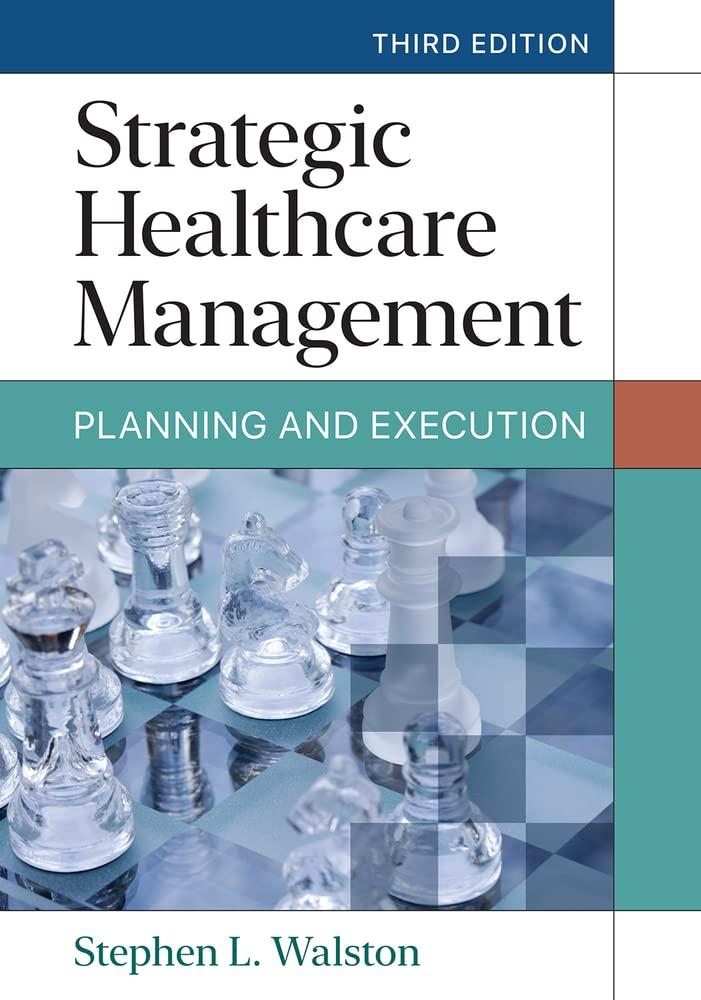In the 1980s, two healthcare organizations with distinct cultures attempted a merger that soon ran into trouble.
Question:
In the 1980s, two healthcare organizations with distinct cultures attempted a merger that soon ran into trouble. How, and why, are mergers difficult? Consider the following history In 1975, Idaho Falls, Idaho, had two hospitals: Community Hospital of Idaho Falls and Idaho Falls Hospital. The first was managed by a community board and the latter was controlled by Intermountain Health Care (IHC), a regional healthcare system based in Salt Lake City, Utah, more than 200 miles away. To control costs of duplicate management and services, the two hospitals merged in 1978 to form the Idaho Falls Consolidated Hospitals, with two campuses: Parkview and Riverview.
However, the merger dissolved in 1984, and the board of the Community Hospital of Idaho Falls asked Hospital Corporation of America (HCA) to manage the Parkview facility and eventually replace it with a new healthcare facility. Local physicians wanted a single regional medical center, and eventually IHC and the Idaho Falls Community Hospital boards signed an agreement to build a joint venture hospital managed by HCA. In 1985, ground was broken for the HCA Eastern Idaho Regional Medical Center (EIRMC), which opened its doors to patients on December 22, 1986. The 1,074 employees of Parkview and Riverview Hospitals were terminated at midnight on December 21, 1986, and hired by EIRMC one minute later. The members of the medical staff no longer had to cross town to see their patients at two facilities. Significant savings to the community and reduced healthcare costs were predicted.
Although IHC controlled only 49 percent of the joint venture, it expected a collaborative relationship. Senior leaders of IHC trusted that HCA would work with them to maintain reasonable hospital charges and develop appropriate services for the Idaho Falls community. As one leader later reflected, he thought a handshake and promise would suffice.
However, almost immediately, the differences in missions arose and quickly became pronounced. What HCA and IHC thought was good for the community and for themselves appeared incompatible. As a for-profit, HCA’s managers immediately focused on reducing costs and increasing prices. IHC, on the other hand, desired cost efficiencies, but nothing as austere as those pursued by the HCA. It also wanted prices to remain lower. But IHC did not manage the facility and only had influence at the board level.
Employees also struggled to work together. The cultures of the two previous hospitals had been very different. Turnover increased and conflicts erupted. These issues and differences became very clear when the board, which was made up of HCA and IHC leaders, was presented with the first EIRMC budget. The profit expectations were more than double what IHC would earn in one of its solely owned facilities. The CEO of IHC wanted this merger to work, but could it?
Questions
1. Why is the merger having difficulty? What factors cause mergers to fail?
2. How does having distinct missions affect how an organization structures its processes and outcomes?
3. What could be done to solve the problems? Is merging a for-profit with a not-for-profit doomed to failure?
4. Can organizations with such different missions merge? If so, how?
Step by Step Answer:

Strategic Healthcare Management Planning And Execution
ISBN: 9781640553651
3rd Edition
Authors: Stephen L. Walston PhD





